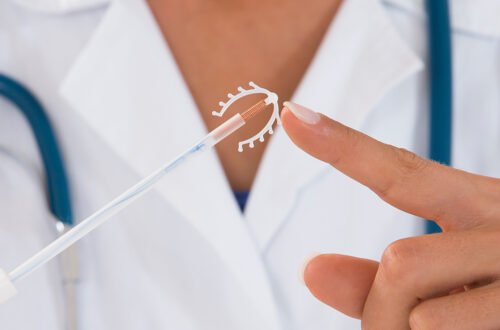
Introduction and extraction of intrauterine devices
- Yerevan, Margaryan Street, 6/1
Intrauterine device (IUD) is a type of contraceptive introduced in the cervix and uterine cavity. The effectiveness of this method of contraception reaches 99%. An IUD should be installed only by the doctor in the clinic. This guarantees the safety of the procedure and minimal risk of side effects.
Are there any preparations for the procedure?
Prior consultation with a gynecologist at SILK Medical is required. The doctor will tell about the existing methods of contraception, the advantages and disadvantages of spirals and their varieties. It is important to check that the woman does not have contraindications, which include:
- confirmed or suspected pregnancy;
- allergy to spiral components;
- acute infections;
- liver diseases;
- some oncological diseases;
- history of ectopic pregnancy;
- inflammatory processes in the pelvic organs;
- immunodeficiency conditions and taking drugs that suppress immunity.
IUDs are best suited to women who already have children and who have stable monogamous relationships.
Intrauterine spirals come in different types. Depending on the principle of action, there are two types:
- Metal–containing – emit metal, usually copper or silver. They can be introduced for 7-10 years, and they are well suited for women who do not want or for some reason cannot use hormonal contraceptives.
- Hormone–containing – secrete progestin, introduced for 5 years. In addition to pregnancy prevention spirals can reduce excessive menstrual bleeding and pain during periods.
You can install an IUD on any day of the menstrual cycle. Doctors often advise doing this during menstruation, since these days the cervical canal naturally expands.
How is the spiral introduced?
The procedure takes only 5-10 minutes and consists of several stages:
- a woman takes off her clothes below the waist and is placed in a gynecological chair;
- the gynecologist inserts mirrors into the vagina and conducts an examination;
- then the doctor treats the vagina and cervix with an antiseptic;
- a spiral is charged into a special conductor and injected into the uterine cavity;
- when the conductor is in the right place, the spiral is pushed out of it;
- the doctor controls the correct position of the spiral and removes the conductor;
- a nylon thread is attached to the end of the spiral and cut off, leaving 4-5 cm – these “tendrils” are located in the vagina, and with the help of them the device can then be easily removed.
How is the device extracted?
The IUD is extracted when it expires. Extraction ahead of time may be required in the following cases:
- heavy menstrual and vaginal bleeding in between;
- lower abdominal pain;
- device displacement;
- inflammatory processes in pelvic organs;
- pregnancy;
- menopause.
The main steps of the procedure are the same as during the introduction of the IUD. After examination and treatment with an antiseptic, the doctor pulls the ends of the thread with tweezers or a special clamp – forceps. Usually the spiral is extracted quickly and without pain. If necessary, a new one can be introduced immediately. And if a woman has decided to have a child, then it is recommended to plan a pregnancy no earlier than two months later.
You can choose the best method of contraception in SILK Medical. Experienced obstetricians and gynecologists will tell you about the existing methods of contraception and help to choose the right one. Our doctors introduce and extract intrauterine devices carefully and as painlessly as possible.
